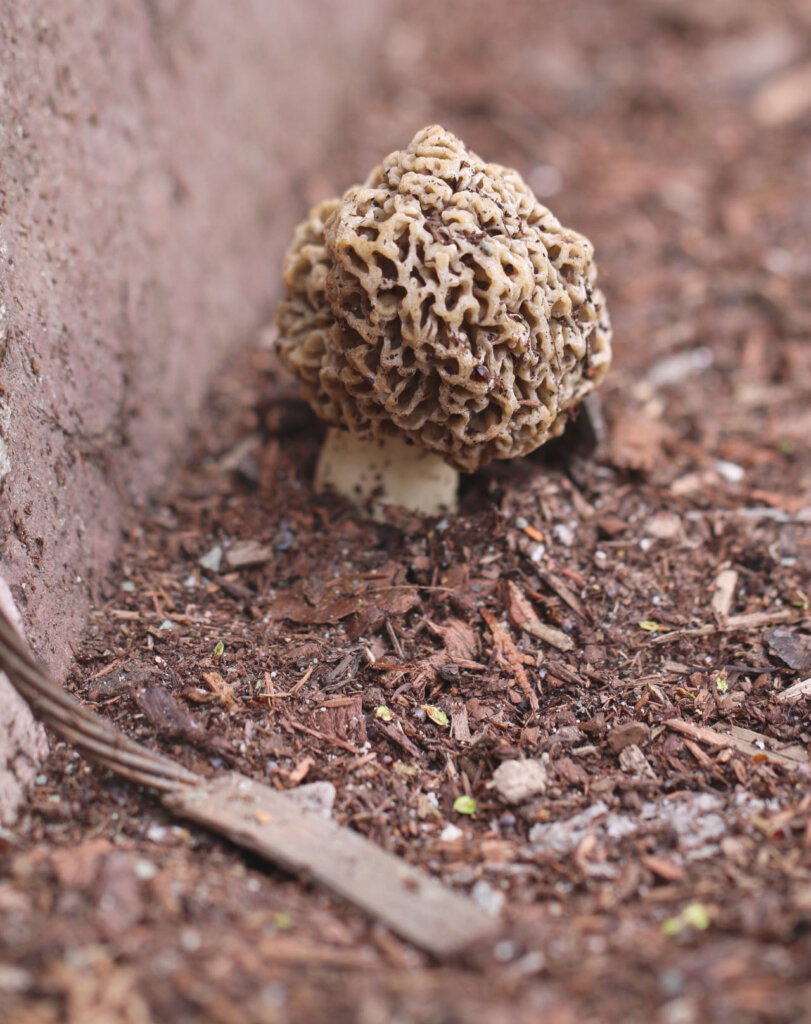First Morels of the Season
The season’s first morels, even if growing in highly questionable soil in downtown Burlington, always are a true sight to behold. Jenna, right out the passenger seat window as we were parking, spotted two plump yellow morels on woodchips among dog-doo and debris.
We gazed out the window at the majestic morels, knowing we would not eat these urban fruits but that their presence was a sign of a delightful season to come. Morels have burst into season with gusto, with Vermont flushes reported from Barre to Burlington to the Northeast Kingdom. In higher spots or mountain areas throughout New England you should not expect good flushes for another couple weeks. But in warmer microclimates, even up through New Hampshire and Maine, we’re again reaching the season when we foragers begin our pursuit of the elusive and exquisite morel.
Of course, it’s not just one species of morel we’re looking for – yellows and blacks are equally delicious, and rare and diminutive half-frees are tasty, too. Michael Kuo and collaborators describe 19 DNA-distinct species of North American morels in their 2012 study, an impressive number of outstanding morel variations. Region of harvest is an important factor in keying out morphologically similar morel specimens. It makes the wildcrafter wonder about terroir and flavor, and the need for further studies (sign me up!) exploring the taste of the myriad species and sub-subspecies of gourmet wild mushrooms in North American forests.
But don’t forget – diversity of false morels is also phenomenal. As a rule, do not eat false morels, or any “morel” which does not have a completely hollow, contiguous cavity from tip to tail. The Verpa and Gyromitra false morels may be most likely to confuse foragers – neither has the signature hollow cavity of a true morel.
The stakes are high, but morels are unbelievably good and maddeningly fun to find. True morels are distinctive once you find them in the field with an expert forager and master a few key ID characteristics including the hollow stem. And if you’re ever in doubt, morels are one mushroom any forager would be happy to take off your hands for you!
Northeastern ForageCast for the month of May

